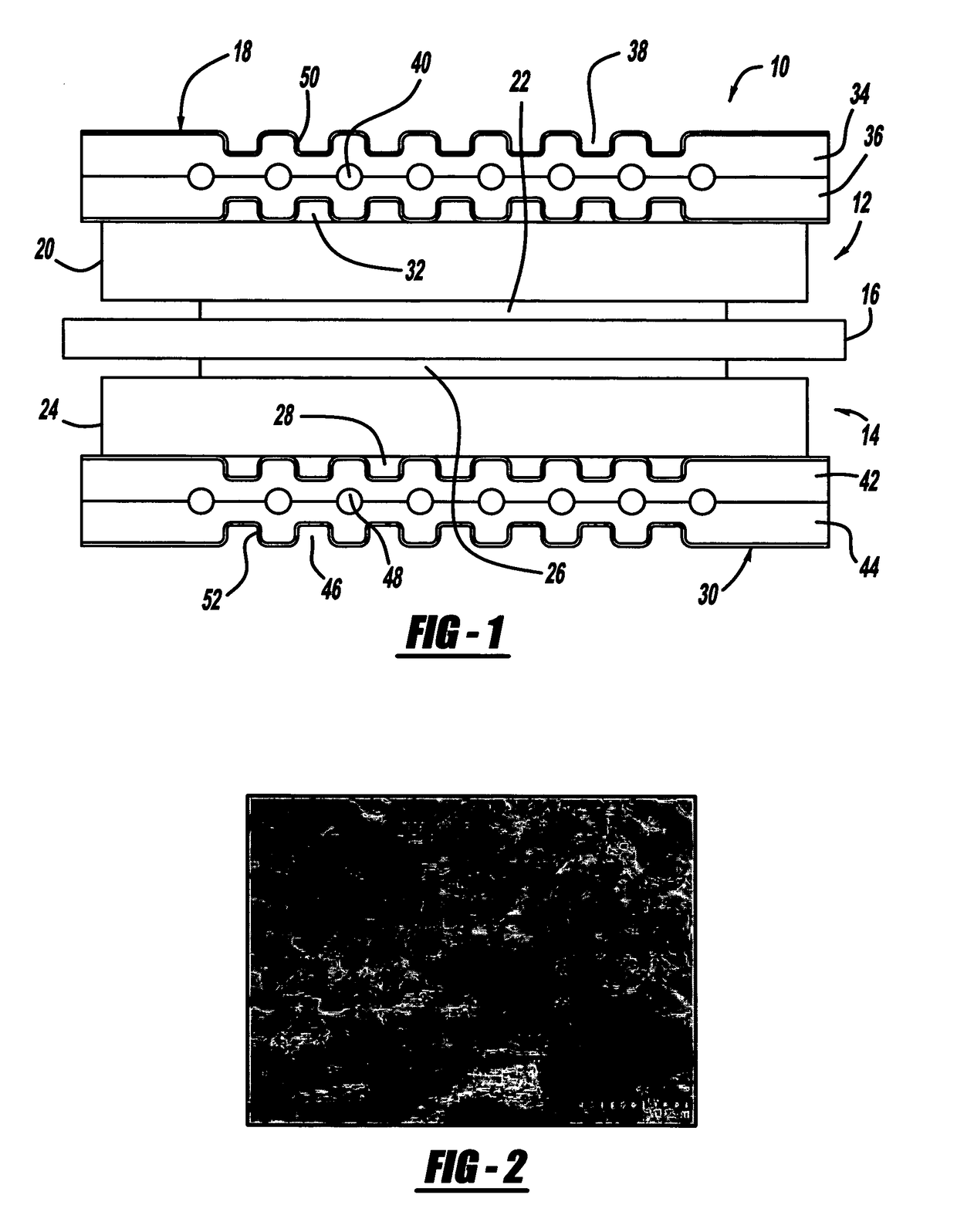Metallic bipolar plates with high electrochemical stability and improved water management
a bipolar plate, high electrochemical stability technology, applied in the direction of cell components, cell component details, electrochemical generators, etc., can solve the problems of reducing the overall efficiency of the fuel cell, reducing the electrical performance, and water accumulation in the flow channel, so as to achieve stable fuel cell environment and more hydrophilic
- Summary
- Abstract
- Description
- Claims
- Application Information
AI Technical Summary
Benefits of technology
Problems solved by technology
Method used
Image
Examples
Embodiment Construction
[0022]The following discussion of the embodiments of the invention directed to a bipolar plate for a fuel cell that includes a carbide coating for making the plate conductive, hydrophilic and stable in a fuel cell environment is merely exemplary in nature, and is in no way intended to limit the invention or its applications or uses.
[0023]FIG. 1 is a cross-sectional view of a fuel cell 10 that is part of a fuel cell stack of the type discussed above. The fuel cell 10 includes a cathode side 12 and an anode side 14 separated by a perfluorosulfonic acid membrane 16. A cathode side diffusion media layer 20 is provided on the cathode side 12, and a cathode side catalyst layer 22 is provided between the membrane 16 and the diffusion media layer 20. Likewise, an anode side diffusion media layer 24 is provided on the anode side 14, and an anode side catalyst layer 26 is provided between the membrane 16 and the diffusion media layer 24. The catalyst layers 22 and 26 and the membrane 16 defin...
PUM
| Property | Measurement | Unit |
|---|---|---|
| thickness | aaaaa | aaaaa |
| contact angle | aaaaa | aaaaa |
| cell voltage potential | aaaaa | aaaaa |
Abstract
Description
Claims
Application Information
 Login to View More
Login to View More - R&D
- Intellectual Property
- Life Sciences
- Materials
- Tech Scout
- Unparalleled Data Quality
- Higher Quality Content
- 60% Fewer Hallucinations
Browse by: Latest US Patents, China's latest patents, Technical Efficacy Thesaurus, Application Domain, Technology Topic, Popular Technical Reports.
© 2025 PatSnap. All rights reserved.Legal|Privacy policy|Modern Slavery Act Transparency Statement|Sitemap|About US| Contact US: help@patsnap.com

